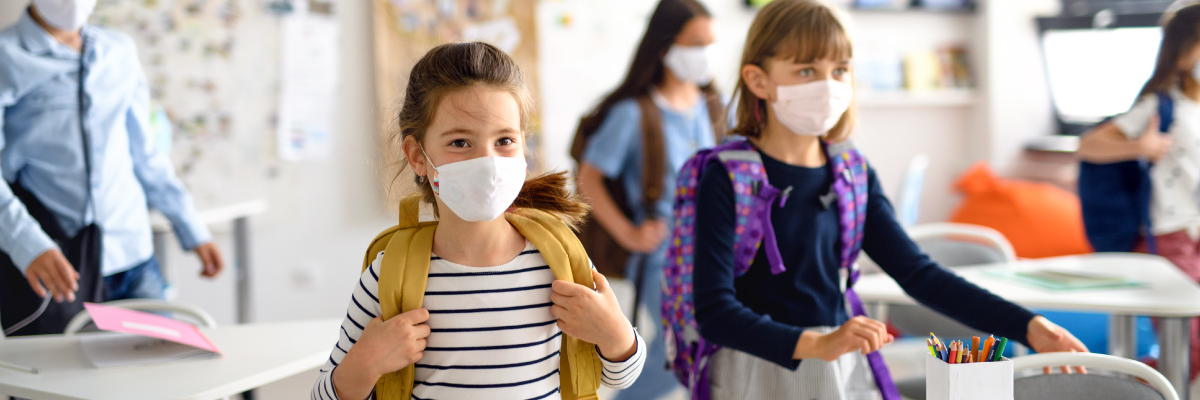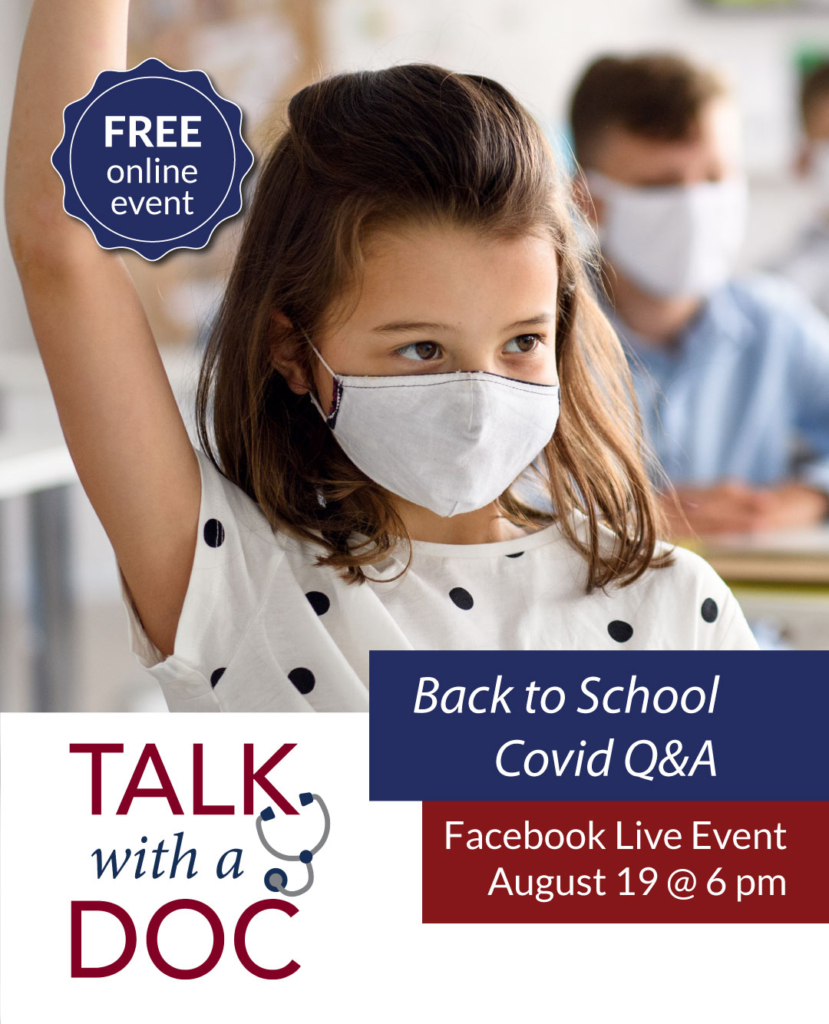
Article at a Glance
“Back to school” time is always a frenzy, but preparing your kids to go back to school during a pandemic is uncharted territory. The number of considerations that go into when, how, and if they return can be overwhelming. If your children will be returning to school this fall for in-person learning, here are some ways to prepare them for a safe return.

They may be washing their hands at home, but it’s important they keep it up at school. Hands should be washed with soap for at least 20 seconds, making sure to clean between the fingers.
When they can’t wash their hands, kids should use hand sanitizer. Many schools will be providing hand sanitizer to students, but sending them with their own will ensure they always have access to it. Encourage them to use hand sanitizer after they touch common surfaces such as doorknobs, chairs, desks/tables, and computers.
Whenever possible, your kids should practice physical distancing of at least 6 feet between them and the people around them. If that’s not possible, then physical distancing of at least 3 feet is appropriate if cloth masks are worn. Measure out 6 feet and practice physical distancing with your kids so they can improve spatial awareness.
Wearing a mask will help to protect your kids in situations where they can’t maintain 6 feet of distance between their classmates and teachers. School policies can range from suggested to mandated, so be sure to check with your school district on their policy. Masks should cover both the nose and the mouth.
If you choose to use plastic face shields, they should be worn in combination with a cloth mask and should extend below the chin and wrap around the face. Wearing a face shield on its own may not provide your kids with adequate protection. Face shields are available with animal faces or flower crowns to make wearing them more fun.
Teach kids to sneeze and cough into their elbow help to limit transfer of droplets. If that’s not possible, then hands should be washed or sanitized immediately after coughing or sneezing to prevent the transfer of droplets to common surfaces. Make it fun and memorable by turning it into The Dab dance move.
Whenever possible, make sure your child has their own set of school supplies to limit their risk of exposure. If this isn’t possible, they should use hand sanitizer after using anything shared. They should also avoid touching their face, eyes, or mouth. Remind your child they should not be trading masks or sharing lunch items.
If your child is sick, keep them home. If they’ve been exposed to someone who has tested positive for Covid-19, keep them home and quarantined for 14 days. To help your child through a long home stay, setup virtual play dates or game/movie nights to help ease the difficulty of distance learning or quarantine.
Quarantine is a huge disruption to everyone’s schedule. But, if everyone who needed to stay at home did so, it would dramatically slow the spread of Covid-19 and get us “back to normal” sooner. Even if your children will be going back to school, making a plan for distance learning is a great idea.
The best way to ensure your kids are safe when they return to school is to use these practices in your home before they go back. Establish handwashing routines, hand sanitizer stations, and normalize wearing a mask when going out in public. Create fun games around the precautions to make them less scary for young kids and more fun for older kids. Model physical distancing and explain the importance of it.
Most of all, be patient. Though they may be excited to see friends again, their classroom experience will not be “back to normal” this year.

Dr. Gottfredson is passionate about preventive medicine and pediatrics. After thirteen years away serving in the Air Force, he’s excited to be returning to Utah. Languages: English and Spanish.